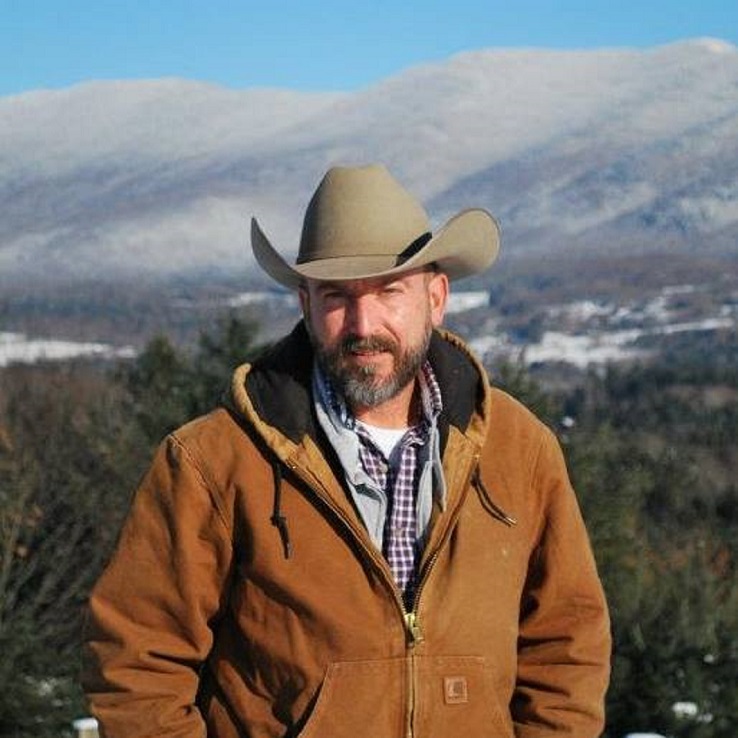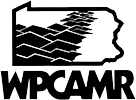WPCAMR... the organization
Environmentally unsound, unregulated mining practices occurring from the mid 1800’s through 1977 have left a horrendous legacy of
scarred landscapes, health and safety hazards, and degraded waters of monumental proportions throughout Pennsylvania’s coal regions.
Recovering from the impacts of abandoned mining operations will incur a price tag measured in billions of dollars and a timeframe measured
in decades. The pace of reclamation efforts and the scope of problems addressed have beeninadequate to satisfy many of those forced to live
and cope with these problems.
The Western Pennsylvania Coalition for Abandoned Mine Reclamation (WPCAMR) is a coalition of 24 conservation districts in the bituminous
coal fields of Western Pennsylvania formed to advance the cause of reclamation of abandoned mine lands and degraded waters.
Vision
WPCAMR will be a leader in the reclamation of areas adversely impacted by past mining practices.
Mission
Our purpose is to encourage and implement the reclamation of abandoned mine lands and degraded waters of Western Pennsylvania. This
includes returning abandoned mine lands to productive use, improving water quality, and reducing hazards to health and safety, thereby
improving the local economy and enhancing the quality of life. The Coalition will work in alliance with individuals or organizations, public or
private.
Organization
WPCAMR is incorporated as a 501(c)3 non-profit corporation. Its Board of Directors is comprised of delegates, one each from its member
conservation districts, and the following officers: president, vice president, secretary, and treasurer. General membership is open to
organizations and individuals. Meetings are held quarterly.
The organization is staffed with 2 full-time paid positions: the Regional Coordinator (Andy McAllister) and Watershed Coordinator (Anne Daymut).
Since 1994, the majority of operating expenses have been derived from an EPA Section 319 grant as administered through PA DEP’s Bureau
of Watershed Management. In recent years a variety of projects taken on by WPCAMR have been made possible from other state and federal
grant programs, most notably Growing Greener. Other sources of funding include grants from non-governmental organizations and from
membership dues. Intern programs such as AmeriCorps and VISTAs have also expanded WPCAMR’s capacity to offer services.
History and Background
The Western Pennsylvania Coalition for Abandoned Mine Reclamation (WPCAMR) came into being in 1981 when a Western Pennsylvania
group intent on improving the devastation resulting from over a century’s worth of unregulated coal mining acted upon their frustrations.
Comprised of conservation district leaders, federal conservation professionals, and other conservation-minded individuals, the group believed
more resources should be made available and applied to the massive abandoned mine reclamation issues of the region.
Initially, their goal was to obtain more money for the Rural Abandoned Mine Program (RAMP), a federal program designed to address AMR. Through advocacy and outreach efforts and by involving local officials, communities, state and federal agencies, the group was successful
obtaining RAMP funding for western PA. The model based on partnering proved to be quite practical and effective. As one successful land
reclamation project after another came to fruition, state and federal agencies slowly came to embrace the approach.
Over time, WPCAMR
began to place an elevated emphasis on the then largely neglected issue of degraded water quality due to abandoned mine drainage
(AMD). Other avenues to providing the necessary resources were also identified, including the use of the PL-566 law to provide funding and
resources for AMD projects. In spite of the successes with the RAMP program in PA, it ultimately faded out of the picture because of lack of
support nationally. However, the groundwork lain throughout the 80’s and into the 90’s by the all-volunteer organization paved the way other opportunities.
In 1994, a financial breakthrough came from EPA’s Non-Point Source Section 319 program as administered through PA DEP’s Bureau of
Watershed Management. Funding provided the means to hire WPCAMR’s first employee, Mark Killar, as the Regional Coordinator. Urging
local support and partnerships and starting with small, doable projects as the model to follow in building local sustainability, Killar provided
support to fledgling local groups interested in solving AMD problems. DEP was encouraged by the approach and lent financial and on-the-ground
support to projects. At the same time, innovative passive treatment technologies were just coming on the scene as cost-effective
alternatives for AMD treatment. As prototype projects succeeded, the model of locally driven passive treatment solutions gained momentum.
From 1995 through 1997 WPCAMR coordinated 18 passive treatment demonstration projects involving federal, state, and county agencies
and local watershed associations and partners. In this timeframe, a second paid position of Watershed Coordinator was funded by the 319
program, further expanding WPCAMR’s ability to help build local capacity through the establishment and nurturing of watershed associations.
Teamwork, partnerships, and a “ground-up” approach developed over the years by conservation districts proved to be very successful.
As more and more systems were proposed, another issue increasingly came into play: landowner liability. To insulate and encourage
landowners to participate in allowing passive treatment systems to be built on their properties, WPCAMR played a key role in the establishment
of the “Good Samaritan” legislation. WPCAMR was also instrumental in the formation of the Eastern PA Coalition for Abandoned Mine
Reclamation in the anthracite coal region and the National Coalition for Abandoned Mine Reclamation. WPCAMR also participated in
successful advocacy efforts to re-enact AML funding legislation.
In 2000, WPCAMR took a major organizational step by formally incorporating as a non-profit corporation. While still maintaining close ties
with Westmoreland Conservation District that hosted the Coalition through its formative years, the Coalition has increasingly grown more
independent.
The Coalition broadened its service thrust when Growing Greener funding became available. Projects include: digitizing Scarlift abandoned
mine site reports; locating, evaluating and prioritizing mine refuse piles; studying the formation of an Ohio River headwaters organization;
creating the abandoned mine reclamation clearinghouse web site; and communicating with decision-makers concerning AMD issues.
WPCAMR also administered the Regional Watershed Support Initiative grants program, aiding watershed associations in capacity building over
a 5 year period.
Personnel changes have occurred throughout the years. Andy McAllister is now the Regional Coordinator and Anne Daymut is the Watershed
Coordinator. The service area is currently 24 counties which include almost 90 watershed associations. New issues continually appear such
as bankruptcies of major coal operators, the flooding of mine pools in the Monongahela basin, and the uncertainties involved in the future of
the AML Fund. In fact, through work initiated by WPCAMR, the Monongahela and Allegheny Rivers were named as the 5th most endangered
river system in the nation by the American Rivers organization in 2004. WPCAMR continues to promote innovate and cost-effective treatment
and reclamation technologies and the need to adequately address the operations and maintenance needs of existing treatment systems.
WPCAMR has a proud, award-winning history of over 20 years of leadership where the climate for reclamation has markedly improved and
the pace of reclamation efforts, particularly with water quality issues, has greatly increased. The environment is indeed better because of
all the partners who have been in involved in the creation of this movement. But as the climate for reclamation has changed, so have the
challenges. The Coalition must continue to adapt to the ever-changing circumstances to maintain a leadership role in abandoned mine
reclamation.
Staff
Andy McAllister , Regional Coordinator
 With over 20 years of professional experience in the fields of Benthic Ecology (ecology of bottom-dwelling critters), Water Pollution Control, and Abandoned Mine Drainage abatement, Andy has worked throughout the Eastern half of the U.S. and abroad. Andy has worked in the private sector as well in academia and government examining how bottom-dwelling invertebrates in marine, estuarine, and freshwater ecosystems react to and recover from many forms of pollution. He is a former Water Resource/Watershed Specialist for the Dauphin Conservation District who, in 2006, joined WPCAMR as the Watershed Coordinator. Andy became the WPCAMR Regional Coordinator in February 2009. With over 20 years of professional experience in the fields of Benthic Ecology (ecology of bottom-dwelling critters), Water Pollution Control, and Abandoned Mine Drainage abatement, Andy has worked throughout the Eastern half of the U.S. and abroad. Andy has worked in the private sector as well in academia and government examining how bottom-dwelling invertebrates in marine, estuarine, and freshwater ecosystems react to and recover from many forms of pollution. He is a former Water Resource/Watershed Specialist for the Dauphin Conservation District who, in 2006, joined WPCAMR as the Watershed Coordinator. Andy became the WPCAMR Regional Coordinator in February 2009.
Anne Daymut , WPCAMR Watershed Coordinator
Biography and photograph coming soon.
|

